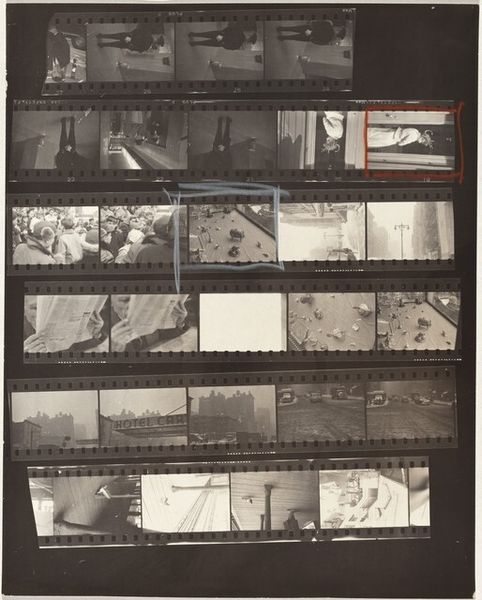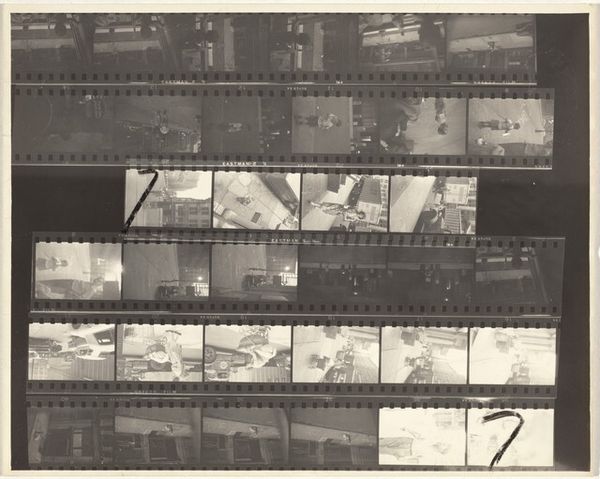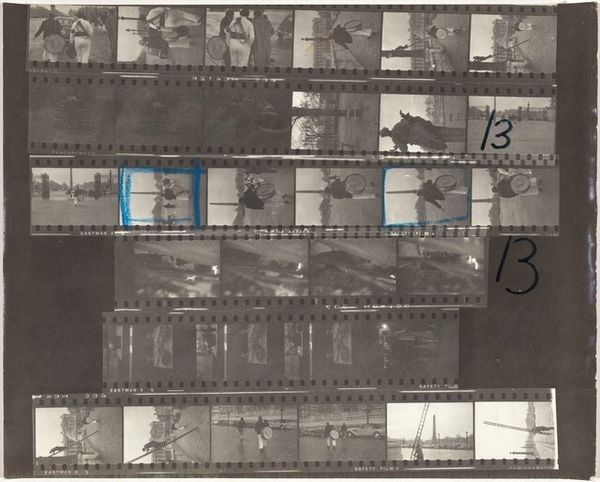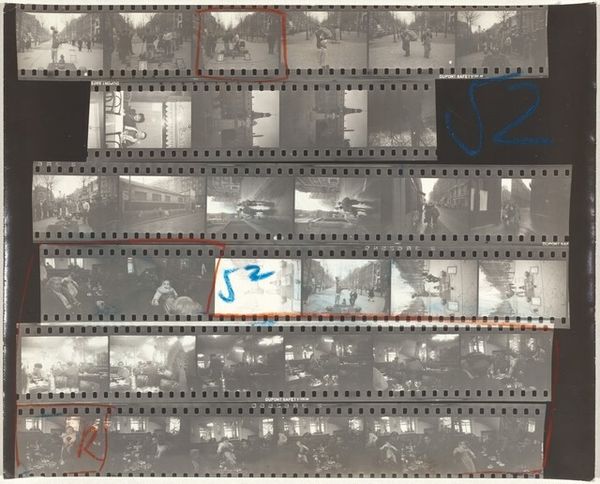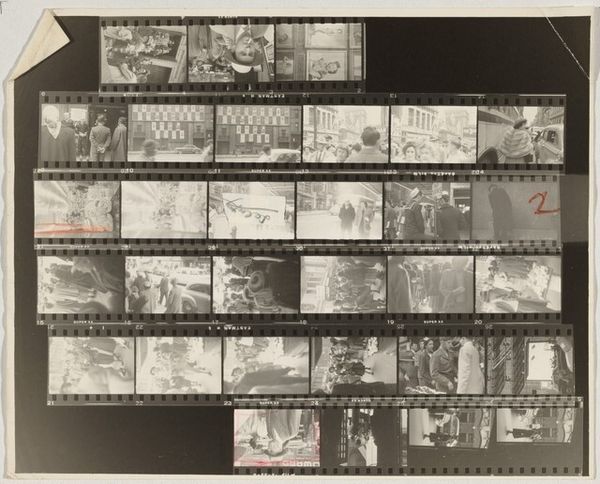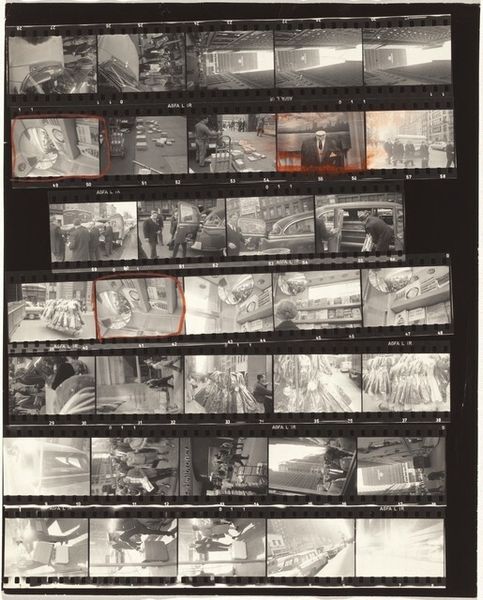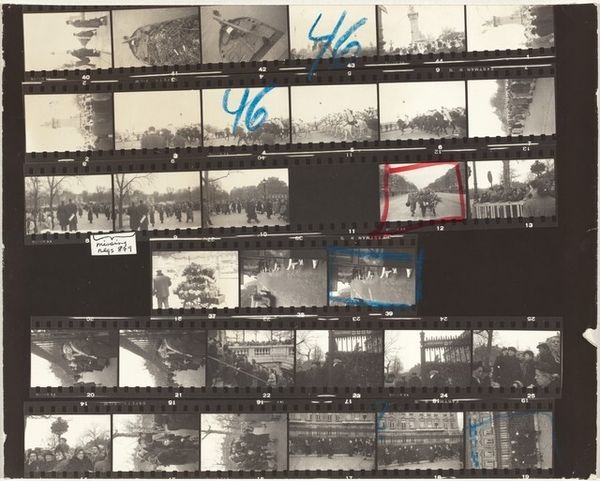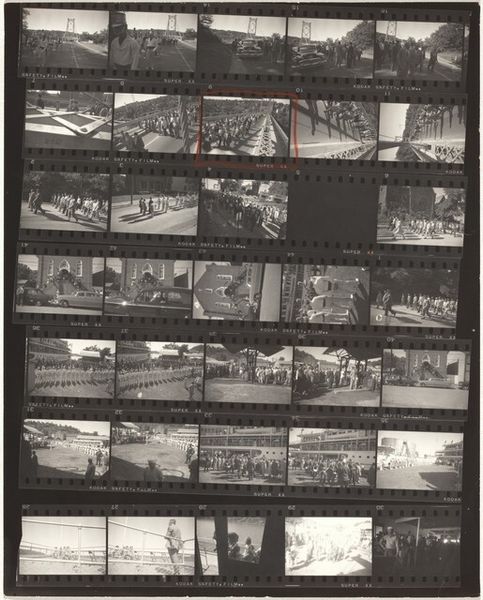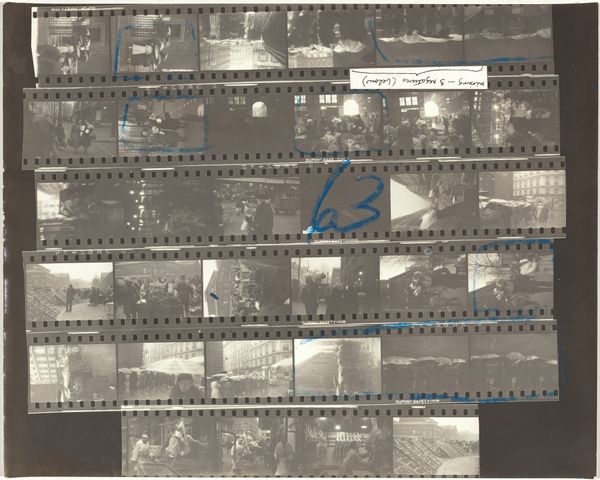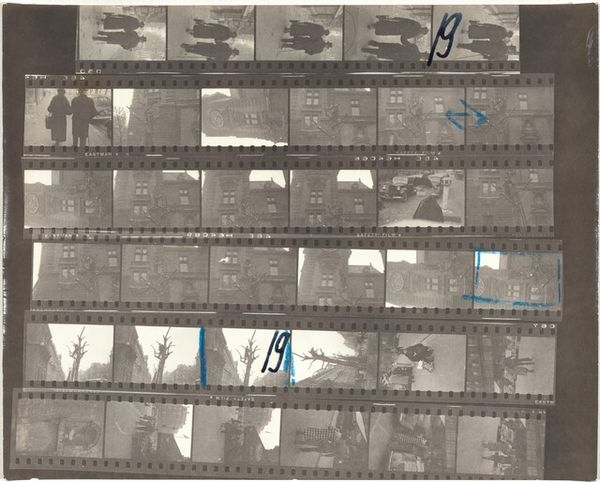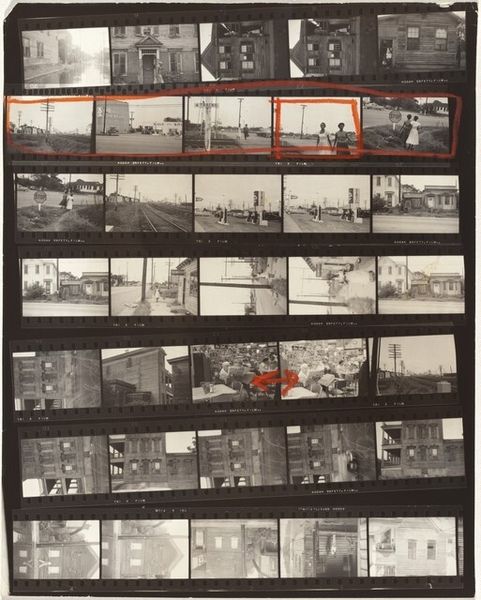
photography, gelatin-silver-print
#
landscape
#
street-photography
#
photography
#
gelatin-silver-print
#
cityscape
#
realism
#
monochrome
Dimensions: overall: 20.2 x 25.3 cm (7 15/16 x 9 15/16 in.)
Copyright: National Gallery of Art: CC0 1.0
Curator: This is Robert Frank's "Paris 58B", a gelatin silver print made between 1951 and 1952. Editor: It looks like a contact sheet or film strip—unfiltered, raw, very much about the process. Curator: Exactly. Frank wasn’t interested in producing pristine images; he embraced imperfections. The visible numbering, the handwritten “58,” even the smudges all speak to his working method, challenging notions of photographic purity. The materiality emphasizes process over product. Editor: I see how these everyday urban scenes challenge that sense of preciousness we often associate with fine art photography. And contextually, after the Second World War, this raw approach was radical. How was this collection received, knowing it captured fragments of French street life? Curator: It was very controversial. These glimpses—shop windows, shadowy streets, glimpses of people—felt bleak and fragmented compared to the romanticized images of Paris that were popular. They spoke to the disaffection many felt. Editor: There’s a strong sense of social commentary, too. I see ordinary moments elevated. The images selected invite us to reflect on modern society. Curator: Yes, Frank often focused on those excluded or on the periphery. Editor: Knowing how institutions at the time generally championed the traditional, it must have been a real fight to get such unfiltered realities showcased, with photography usually focusing on idyllic imagery. Curator: It truly was. These photographs reflected a Europe undergoing reconstruction and a changing sense of national identity. Editor: Seeing this today, as a complete object—the full contact sheet—shifts how we interpret it. The work has now been absorbed into popular cultural heritage, its message perhaps diluted. Curator: But its impact on the evolution of the street photography genre and influence over visual artists more broadly continues to be profoundly felt today. Editor: A fascinating lens into a pivotal period and how social structures influence artistic reception. Curator: Indeed, Robert Frank’s bold decisions related to materiality and form encourage critical exploration of photographic representation.
Comments
No comments
Be the first to comment and join the conversation on the ultimate creative platform.
